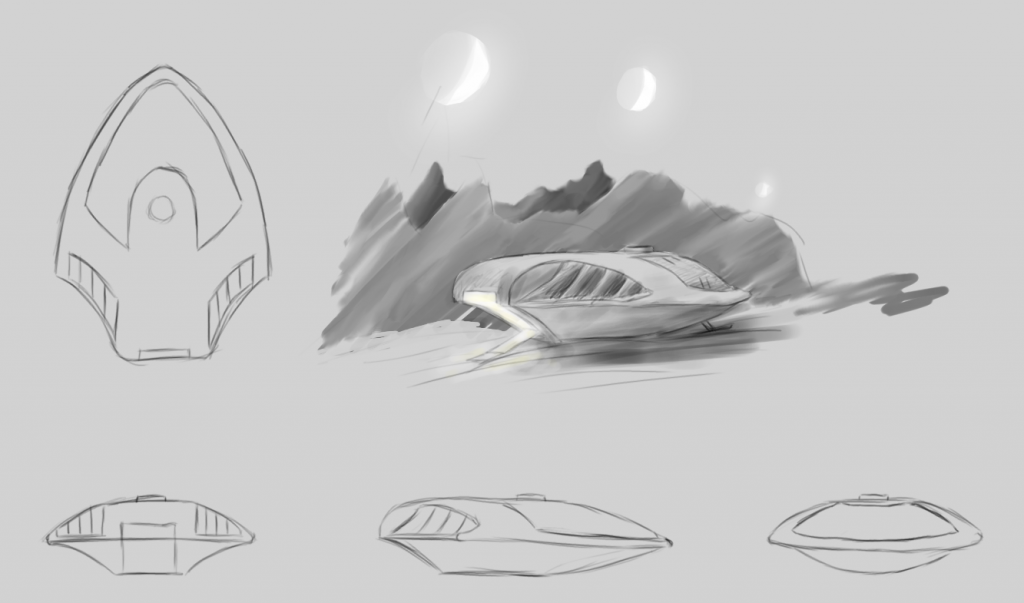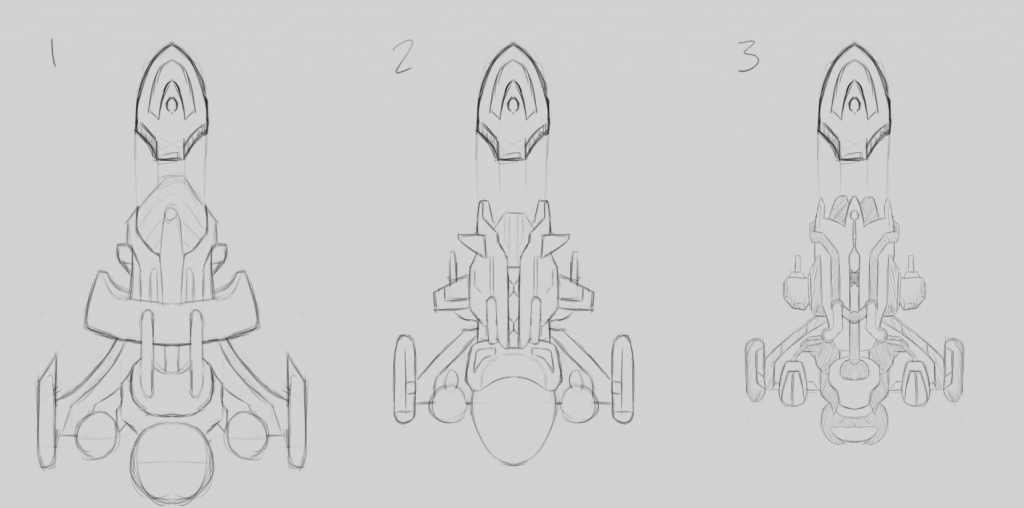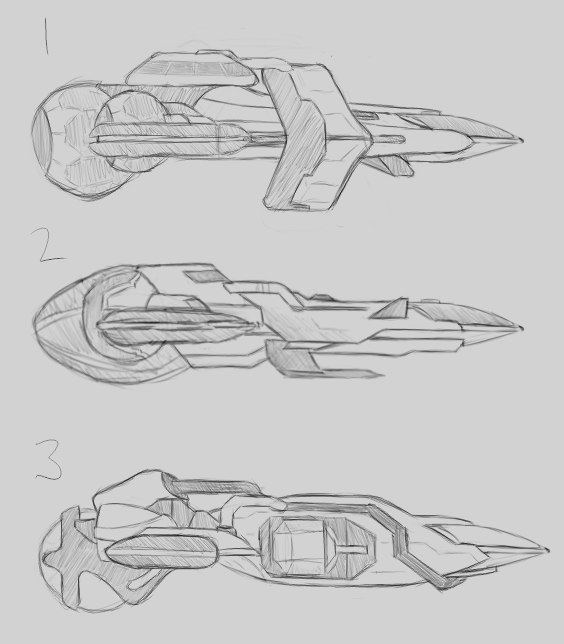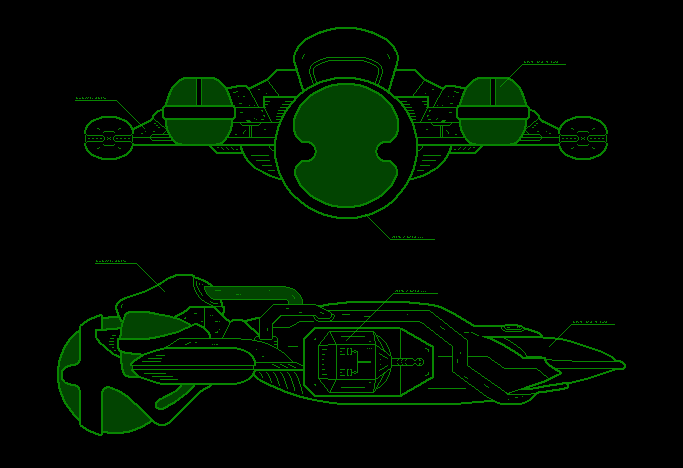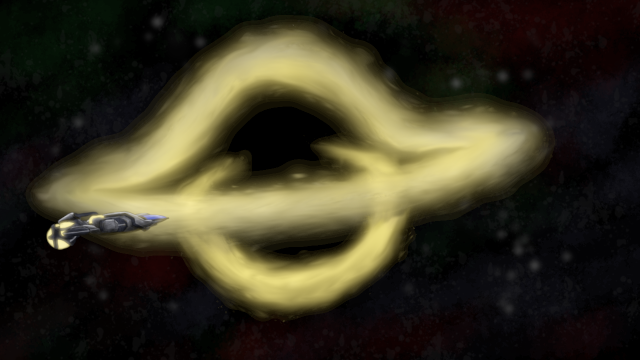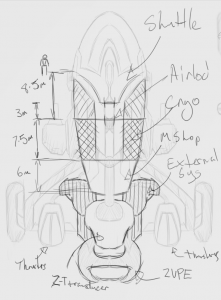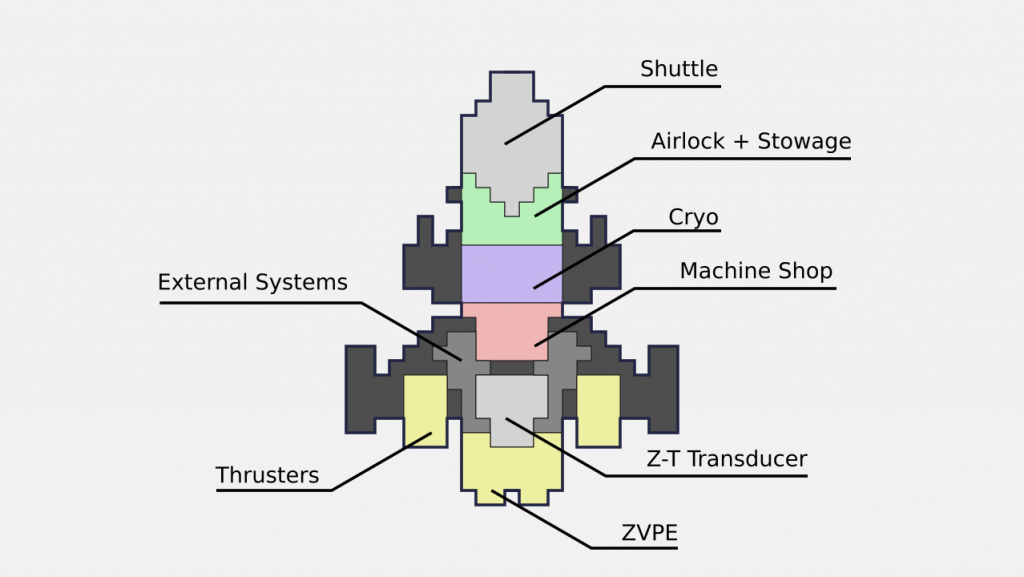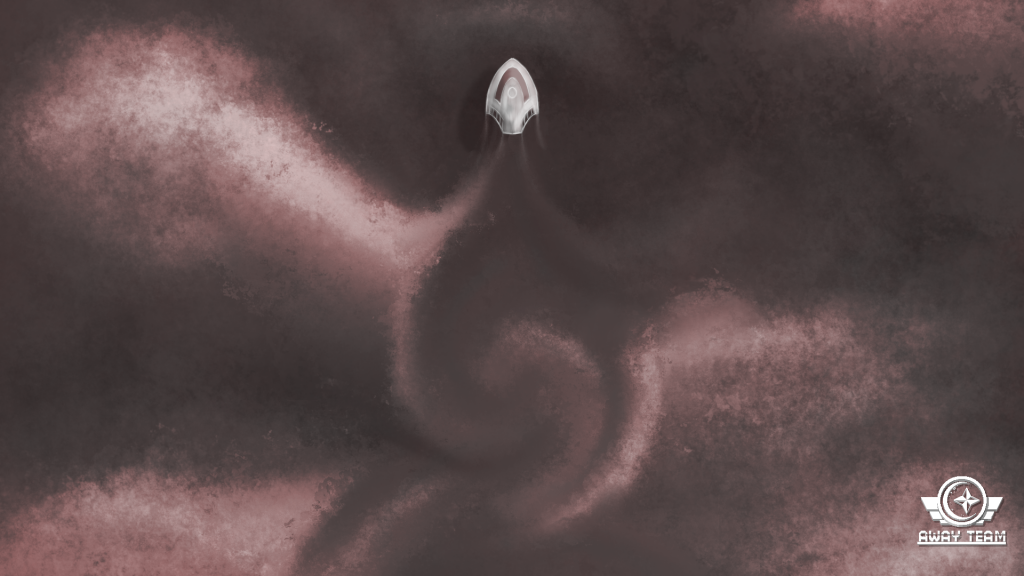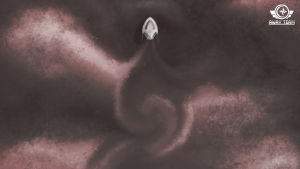What's In A Ship?
The Away Team is a game about a small crew's journey through the isolated and mostly empty reaches of time and space. Most of The Away Team's gameplay and narrative are presented through "missions" that take place on the surface of the planets you come across.
So much of the tone and context of the game is about eking out an existence with limited resources onboard what is effectively a very advanced tin can. In many ways, the Argo is more than just a vessel. It's the "body" of the AI you play as, it's a home to the crew, and it's also the cage they are trapped within until your mission reaches a conclusion. That said, the game itself presents very little of the ship and what that life is like for the crew.
When I first started working on The Away Team a year ago, one of the things that sat at the top of my wishlist for new features was to give the ship (and its shuttle) a little more presence in the game. For this post, I won't go over how exactly we're doing that in the upcoming Lost Exodus update, but I will be looking at some of the concept refinement we did along the way. While we still don't show or describe the specifics of the ship in great detail, a consistent design for the Argo helps us avoid contradictions and make more conscious use of the ship as a location.
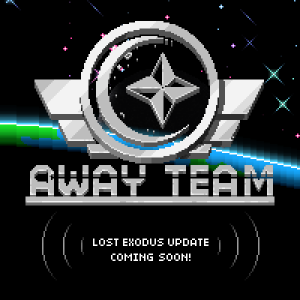
Existing Art
Expanding on The Away Team's original style while also preserving it is important to me, and so in this sense, the kind of work we needed to do was backwards. Instead of using concept art to inform final game art, I needed to use Chris Nordgren's final game art to inform concept art for new stuff. The idea is to end up with new art that feels like it fits with what the existing art is communicating.
So far as existing visual references go, the shipped game includes a 30x23 sprite. To avoid (or create) confusion, let's refer to this as the "shipped art."
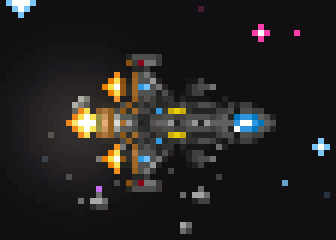
Beyond that, there were a couple of iterations of placeholder and WIP art that I had access to. While they're interesting heritage, they don't really contain elements that are relevant to where the shipped art ended up. On the left is the first placeholder ship image, based on a ship created by wuhu on OpenGameArt.org. Progression toward the final design of the shipped art can be seen across the two remaining WIP ships.

Perhaps the most important reference came in the form of the in-game descriptions of the ship and its systems written by Michael Fiegel, which talk about the length of the vessel, its major components, and in some cases, their distribution across the ship. We've tweaked these a tiny bit for Lost Exodus to maintain consistency across the entire game, but Michael's writing is really the heart of the game and is the mass around which everything else orbits.

Initial Sketches
The very first piece of more detailed ship art I did was a rough placehoder of an aft (rear) view that I needed for a mock-up, where it sat behind foreground elements to give a little more definition to the ship and a little reminder that the ship is there. I wanted to let the ship's engines/thrusters have the most prominence here to suggest travel and forward progress.
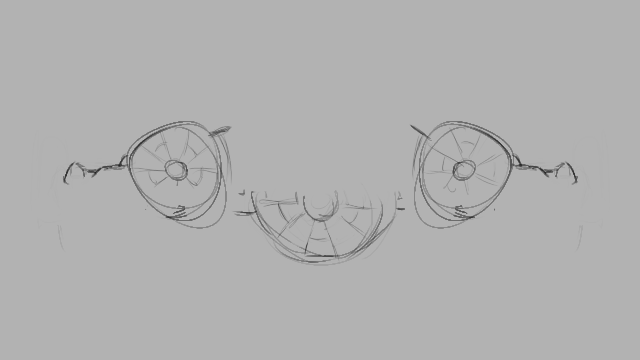
Balancing myself between multiple projects and multiple disciplines meant that I wouldn't return to ship art for a few months - all of my Away Team time went to other bits of art, writing and programming. In early march, while taking a few days off, I started to do some sketches of the shuttle. I wanted to try and maintain the general shape hinted at by the shipped art. Even though you never see it separated from the ship in any of the shipped art, the shape of the front of the shuttle is visible to an extent.
None of these scribbles ended being used, but they were useful in getting me in the right frame of mind to come up with something that worked. You can also see some orb shaped engine ideas and a little "view looking out the rear shuttle hatch" sketch.

The Shuttle
Another month later, I had a shuttle design that felt like a good fit. I like to do rough little scenes to put my designs in to help give me a sense for how they might feel when actually used, and so I painted a little scene of the shuttle on a darkened planet with light spilling from the open rear hatch while three crescent moons shone down from above. At this time, I also started and abandoned a larger piece of concept art showing the shuttle flying through clouds, causing swirling eddies in its wake - we'll come back to that later.
The Exterior
From here, we were at a point where there was value in starting to solidify the look and feel of the ship. I needed to have certain details defined and locked in before I could move ahead with other work. I spent a few days sketching out ship concepts and pulled together my favourite three into candidates that we could discuss and review.
Each design embraced different elements of the shipped art and took different liberties. I tried to think about the ship's structure and features while working on these - where does the shuttle end? Where would the cryopods be? The in-game text describes most of the ships systems as being external so that the crew can't fiddle with them, so where might each of them be located?
I also did side views for each design. Interpreting and expanding on details suggested by the shipped art is a big challenge. To me, the most important thing is maintaining as much of the "character" of the source artwork as possible.
The possibility space in low fidelity art is very broad, and narrowing that down runs the risk of denying people their existing interpretations. I've had a little bit of experience with doing this kind of work in other projects, so it wasn't as daunting here for me as it could have been, but it's still a big responsibility!
To help make sure I wasn't overlooking particular angles, I did some super rough 3D mock-ups. I used these to inspect and think about aspects of the ship that weren't readable/inferable from the top or side views.
My plan was that we'd be able to swap in/out our favourite bits to make one final design, but in the end, after less discussion than I was expecting, we settled on design number 3. With that bedded down, I was able to move ahead with some other features, which included finishing up that aft view and a corresponding side view. There's something fun about the stockiness of this design that I like. It is also arguably the one that most closely represents the detailing of the shipped art.
Below, you can see the final versions of the aft view that my very first sketch was of. Pixel art isn't really my forte, but The Away Team has provided me with many opportunities to hone my skills. Doing the detailing on these was a lot of fun! These images won't really be seen like this in the game, but I feel like the presence they do have helps convey a sense that the ship is an ever present part of things.
I've now painted the Argo a bunch of times, but this one of the ship in front of a hastily drawn black hole was the first time I tried to paint our selected design as a whole.
The Interior
For the next several months, I spent most of my time working on programming and writing. Since some of the new mission text references or takes place within the ship, we felt the need to stop and settle on some solid details for the ship's internal structure.
There were some small inconsistencies about things like how many rooms there were in the text of a couple of existing missions, and likely a number of different visions for how the ship should look while The Away Team was initially being developed. Since none of that was really explored in any detail in-game, that didn't matter so much. Now that we were looking to make these spaces feel more real to players, we needed a solid plan!
The Away Team's project leader Michael Brune put together this handy reference for a "single room" vision of the ship, with the front section being the shuttle (with the orange dots showing the crew's seats), and the rear section being the crew's quarters (with the light blue regions housing the cryopods).![]()
Based on the things I'd loosely been thinking about when doing the exterior designs, I scribbled out some ideas that took into account dimensions and volume sizes.
From there, we settled on a three room layout that puts an airlock section behind the shuttle docking region, and what we've been calling the "machine shop" to the aft. The machine shop is where the ship's internal drones store and maintain themselves. It's not primarily meant for the crew's use, but they might be able to find some tools to use there from time to time.
We may not end up showing many of these places in detail in the upcoming Lost Exodus update, but nailing down specifics helps us identify where the crew might be in particular situations, how the crew might navigate the ship during emergencies, or where a crewmember might go if they want to try to feel alone on a ship with little privacy.
Bonus: Cloudskimming Painting
I mentioned earlier that I'd started a painting of the shuttle in some clouds early on, but had abandoned it. Since painting art that we weren't planning to put in the game is difficult to prioritise, more polished pieces of concept art often have to be put aside when time is limited. When it felt like this one wasn't coming together in the way I wanted, it made more sense to just let it go and focus on actual work that the Lost Exodus update needed than to spend a day wrangling it into submission.
Here's a look at how far I got with it before setting it aside. I'd done a sketchy rendition of the shuttle, and had some reference lines to indicate where the air flow that would cause cloud swirls would go. It's a lot easier to step back from a piece of art when it's still a scribble than it is to do so when you've sunk a dozen hours into it, so being able to identify early when a piece isn't working right can be an important skill.
Months later, after we'd finishing implementing a lot of the key features we wanted to get into the Lost Exodus update, Michael mentioned that he still really liked that piece and was using it as a desktop background. Since I felt a little less under pressure, I decided to spend a day seeing if I could finish it off.
It took a couple of iterations (including modeling volumetric clouds in 3D and using physics simulations to blow them around), but eventually I came back to the more painterly thing I was aiming for initially. Here's an animated GIF showing how it came together!

Here's the final version (or at least, final for now - maybe I'll decide it needs a little more tweaking at some point), which has just a tiny bit of colour in it to hint at the tops of the clouds being lit by a setting sun. I've provided a few variants with different logo placements just in case anybody would like to use them as desktop backgrounds and has a preference for logo placement.
I hope you've enjoyed this look at some of the work I've been doing on The Away Team. It's been a lot of fun, and I can't wait to share it with you when it's ready!
- Cheese
Update!
Redesigning the Argo was one of my favourite parts of working on The Away Team, but it wasn't the only one (see this post on making The Away Team more memorable, and an upcoming post on Lost Exodus' gameplay changes for further discussion).
Part of working on a project is identifying and prioritising the worthwhile work within a project's possibility space, and there was a little more love that I had hoped to give to the Argo, but wasn't confident I could squeeze in before the Lost Exodus update launched. Shortly before the update's release date (months after this post was initially published), I found time to swing back around and do just that.
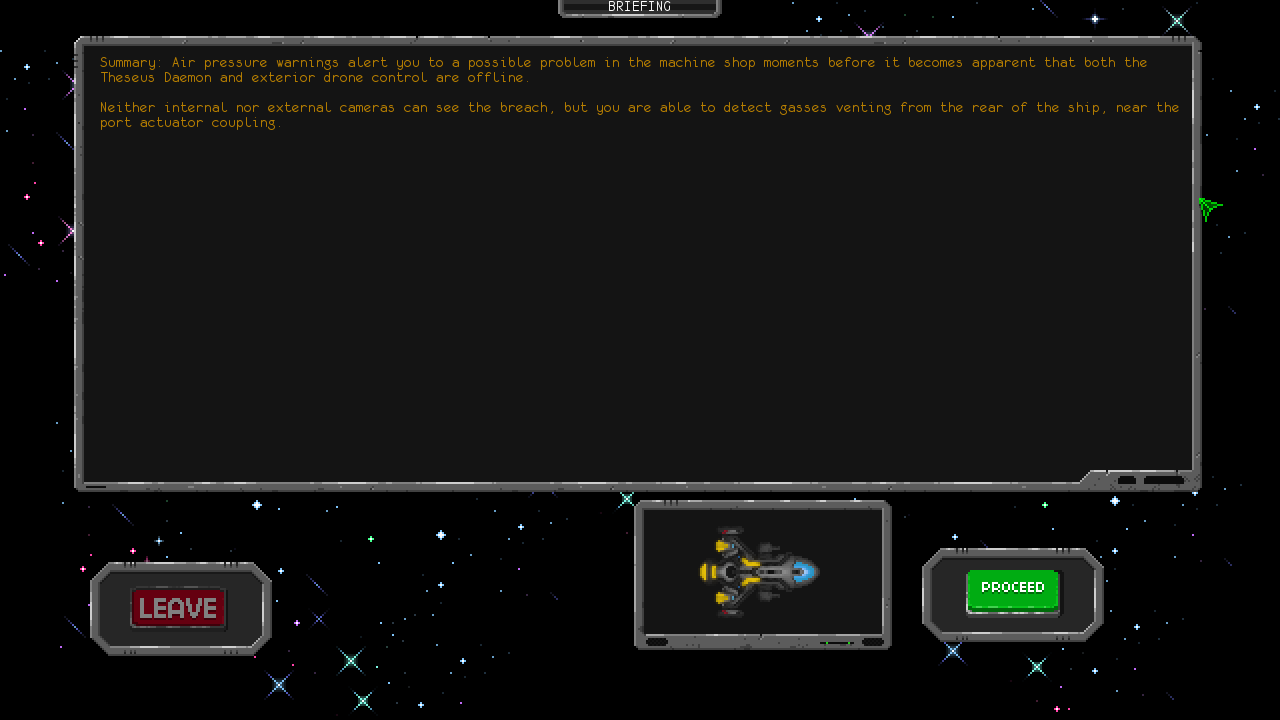
The mission briefing screens typically show a larger view of the planet or station that the crew is being sent off to, but for out of fuel or food events, as well as the new "random event missions," the Argo itself is shown to help highlight that the coming sequence takes place on board.
The briefing screens display sprites larger than what is shown in the sector screen, so I was able to paint (relatively) higher resolution images of the ship, conveying some more of the new design's details at a whopping 60 pixels in length.
Since the out of fuel mission presents the ship as powered down, I created a variant with deactivated engines, no running lights, and a dimmed bridge/shuttle (previously, these used the ship's "idle" sprite). I also created a variant with the shuttle detached that I was considering using for the resource collection missions, but continuing to use their small planet sprites made more sense.

Obviously, it's not as detailed as the images I painted for the Lost Exodus update's end screens, but they do help give the Argo a little more character and presence.
I've mentioned that pixel art is a little outside my comfort zone, and for that reason, one of the last pieces of art I added for the Lost Exodus update was an update to the Argo sprite that players pilot across the sector screen. Taking the design changes covered earlier in this post and trying to condense them down into a ship 30 pixels long was daunting to say the least, but I think I managed to pull it off.

To help make the ship feel a little more alive and to reinforce the sector screen's real-time nature, I added an animation of the engines and power conduits lightly pulsing when idle. While updating the thrusting animation, I added some nicer glow effects and a fix for the bad clipping that the old sprites had too.
When comparing the old shipping sprite with this new one, it becomes easier to see how the redesign is an iteration on what came before. My goals were to solidify the ship's architecture and build its sense of "character" while also trying to retain key aspects of the existing design. To me, it feels more compact, more energetic, and more sturdy.

Narratively, the ship is presented as surprisingly small compared to the predecessor ships you follow. It's cosy for the crew during good times, and cramped during less good times. In a sense, it is your body, and it was built to survive the universe's unknown dangers as you search for a home for the last humans to leave Earth.
The Argo was built by one of the most advanced AIs humanity has ever known, and for a time at least, I enjoyed being Eve.
The Away Team is available now on itch.io and Steam for Linux, Mac and Windows. For more The Away Team: Lost Exodus news, subscribe to the Underflow Studios mailing list!
